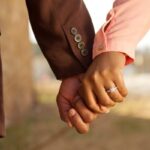Lightroom is a popular photo editing tool for wedding photographers. Lightroom’s ability merge editing and organisation into one workflow speeds up the post-production process.
This is essential when sorting through hundreds images. The editing process can be accelerated by Lightroom’s tools, but only if you are familiar with how they work. These are some Lightroom tips to help you improve your wedding photos. Deep etching service is a great way to modify photos and create layers of images.
It’s a fun hobby to capture a wedding using your camera. Even those with the least technical skills or expertise in photography can easily take excellent images because of the abundance of quality cameras on the market. If you want your images to be memorable, you’ll likely need to modify them in some way.
Both photo editing and photography are art forms in their own right. It is important to think about what you will do with your photos after you have photographed a wedding. Editing a lot of wedding photos and still maintaining the high standards set can be both creatively challenging and time-consuming.
To make culling easier, use flags and stars
Selecting the images that need to be edited is the first step in wedding photography editing. Lightroom includes several useful selection tools to help users make the most out of Lightroom’s many functions, such as its ability to organize and edit photos.
To import files, select the Library’s Import option (bottom left), and then the destination directory (right). Check the box labeled “Add to Collection” and create a new collection for the nuptials.
After you have imported a number of images to a collection you can go through each one individually to select the ones you wish to save. The flags and the star are the most important selection tools in Lightroom for culling. Flags are used mainly for convenience.
Cropping
Cropping an image is one of the most important operations you can do when working with images. This applies whether you are working with an unbalanced action photo or a team portrait that needs some tweaks. In the early stages of photography, it was essential to accurately crop and slice photographs.
You can achieve the same result with just one mouse click. You should not crop too many photos, as they will look crowded and squashed. It is very popular to crop photos to 1:9 squares. For slideshows, 16:9 is the best aspect ratio. It is a fact.
Let Go of the Noise
Reduce the Noise Photographys taken in low light conditions are more prone to “noise,” which refers to the appearance of many tiny fuzzy particles. It can reduce the prominence of the foreground and decrease the overall impact of the image. It is more noticeable in some images, especially those with darker tones. However, it is less evident in photographs that are taken in low lighting.
With photo fixing and retouching software, you can quickly correct or remove noises that are distracting from the quality of your wedding photos. This process is known as denoising and can be done in a few clicks using the Photo Enhancer.
Let It Shine
When editing wedding photos, another thing to consider is the brightness setting. A simple slide of a brightness bars can magically lighten dark images.
Wedding Studio will help you determine the best brightness setting for each shot to maximize the enjoyment of your photos. An algorithm is used for analysing the image to determine the best level of light transmission.
Setting the Right Contrast
Enhancing the contrast in your wedding photos is just as important as changing the white balance. For beginners, it can be difficult to achieve the right mix of highlights and shadows. Presets in Lightroom simplify the editing process by automating colour correction steps. Do not waste your time tweaking each slider individually.
Perfection in Exposure
After applying presets to a photo, the first thing to do is to adjust the exposure. Adjust the exposure as necessary. Next, adjust the brightness of the image by moving the sliders for lights and whites. Adjustments for dark areas involve adjusting the image’s shadows and blacks.
Before altering the contrast slider, it is a good idea to play around with curve-based exposure modifier tools (such as blacks and highlights). The true tone curve can be obtained by photographers who are used to working with curves.
Instead of using the contrast slider which can lead to an exaggerated appearance, increase the contrast by making the highlights brighter and the shadows darker. You can create a matte effect by doing the opposite of what you would normally do. Darken the brightness and lighten the darks.
The clarity slider is my preferred method of increasing the realism in a ring photo. The dehaze tool is useful for dealing with fog or haze.
Color adjustment using HSL and White Balance
Two main panels allow Lightroom Classic to adjust the hue, saturation, lightness and vibrance of images. From the top, the white balance is applied to the entire image.
The dropper tool can be used to select the shirt of the couple or the bride’s, both will be white. You can then modify the area by using the temperature and tint sliders.
The primary panel has vibrance and saturation sliders. However, they can be pushed in any direction. You can run the HSL edits if you absolutely must use them.
Each colour can be adjusted independently by using the HSL panel (hue saturation and luminance). The brightness of a color describes its intensity. Saturation is the intensity of a colour, while hue is the exact tone.
Lightroom’s HSL panel has individual sliders for each color, which allows you to modify them without affecting the others or the overall hue. These colour tools are invaluable for creating a particular feel in your artwork. The entire movie’s feel could be affected if the film’s greens or blues are changed.
The HSL panel allows you to make adjustments and personalize a look. The orange luminance slider can be lifted to lighten skin, and the red luminance slider can be lowered to hide redness.




